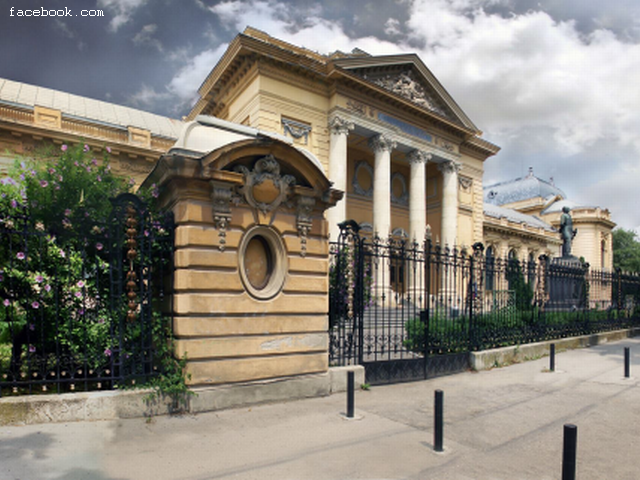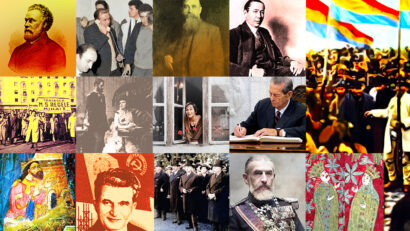The beginnings of modern Romanian medicine
In the second half of the 19th century, Romanian physicians who had studied abroad, in Western Europe, founded medical treatment and education institutes to fight against disease and instruct doctors.

Steliu Lambru, 19.02.2018, 13:35
In the second half of the 19th century, Romanian physicians who had studied abroad, in Western Europe, founded medical treatment and education institutes to fight against disease and instruct doctors. That was the time of a golden generation, which brought Romanian medicine up to the highest standards of the era, marked by personalities such as Nicolae Kretzulescu, Carol Davila, as well as noblemen and philanthropists who financed their efforts.
Medicine as a science appears in the Renaissance, and the first information about it in the Romanian space appears in documents dating back to the reign of Constantin Brancoveanu, who ruled between 1688 and 1714. He brought to his court mostly physicians of Greek origin, but also one Alsacian and one Venetian, who introduced methods resembling what was later to become vaccination. Institutionally, Romanian academies were institutions that practiced what was called iatrosophy, a combination of philosophy and empirical medicine. Royal academies were the core of what became medical instruction in the 19th century.
Physician Octavian Buda, teaching the history of medicine at the Carol Davila Medicine and Pharmacy University of Bucharest, takes us back to the beginnings of modern Romanian medicine, in the early 19th century, when Romanian medicine became closely connected to western medicine.
Octavian Buda: “Western science came to change state policies. It is interesting to look at the comparison that Romanians in the second half of the 19th century made with Belgium. They were flattering themselves by claiming they were the representatives of a Belgium of the East, not because of Belgiums partial Latinity, but because of the fact that it was a country assembled around 1830, with the Romanian Principalities’ relative union taking place later. Romanians insisted on making institutional comparisons as to the speed at which they founded new institutions. For instance, the first physiology institute was set up in 1892 by Alexandru Vitu, the father of biological and physiological research in medicine, who was the initiator of biomedical research. He went to Belgium for biomedical research.”
The rush to modernize took over Romanian society at large, from the simplest of peasants to the greatest of nobleman. One of the great names related to this effort was a French doctor, Carol Davila. Here is Octavian Buda once again: “Modernity as such is set in motion alongside the Organic Regulations, imposed by the Russian authorities, under western influence. That was the time when the College of Physicians was set up, alongside the three great hospitals of the time, Coltea, Pantelimon and Filantropia. Private financing from noblemen was administered by a body called eforie, a rudimentary structure of a ministry of health, which represented the first attempt at coordinating medical practices. The idea of setting up a university level medical education institution was still far in the future, and that is when Carol Davila came to Bucharest. A story told at the time by one of the great surgeons of that era, Constantin Dumitrescu-Severeanu, goes as follows: in 1852 a note was posted on the public announcement board at the School of Medicine in Paris, announcing that two important people were trying to bring to their countries a physician who was an authority in his field. One was posted by Prince Barbu Stirbey, who wanted a physician for his army, and the other was the Shah of Iran. Severeanu claimed that the dean of the Paris School of Medicine, whose son was the head of the French delegation to Bucharest, convinced the young and enthusiastic Davila to choose his countrys younger Latin sister, the United Principalities. What Severeanu did was to single out Davila as a vector of Romanian modernization. Severeanu was one of the first physicians to get a government grant after 1860, as he was part of the first generations of graduates of a school of medicine and pharmacy.”
The process of modernization in Romania was so profound that it affected language itself, according to Octavian Buda: “Behind the curtains was a great man, Nicolae Kretzulescu, who had studied in Paris, was close to Prince Cuza, a complex man who was prime minister, foreign minister, minister of the interior, and Romanian ambassador to Russia. He is a revolutionary in the history of medicine for having created a medical language. This was a period of time when the spelling of Romanian was transitioning from Slavonic to Latin, and a specialized medical language was badly needed. Nicolae Kretzulescu made great efforts to this end, and in 1842 he undertook the translation of a French descriptive anatomy. The Romanian language created for itself a medical language from the ground up. Older medical terms coming from Greek were replaced by Latin terms taken from French. That was a remarkable achievement for a politician of that time. In the mentality of the elites of that era, being a physician was not looked down upon, but was not considered up to the level of a nobleman.”
In time, this process of modernization of Romanian medicine took hold, developing a rich tradition that culminated with the first Nobel Prize won by a Romanian, George Emil Palade, who got the prize for medicine.





























